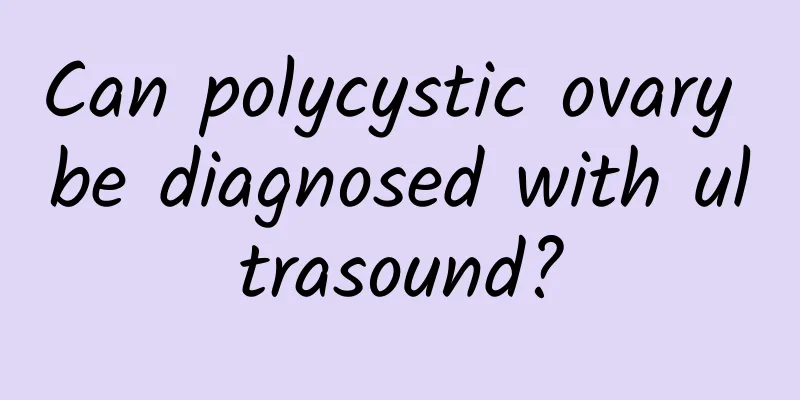Can polycystic ovary be diagnosed with ultrasound?

|
Polycystic ovary is a very harmful gynecological disease, also known as polycystic ovary syndrome, which will cause a series of changes in women's bodies and cause infertility, so we should pay attention to this disease. If the patient suspects that he has this disease, he should go to the hospital for examination in time, diagnose the disease as soon as possible, and then take appropriate measures for treatment to avoid delays in the disease. Although polycystic ovary is a very common disease in life and has a very high incidence rate, most people do not have sufficient medical knowledge, so they often do not know how to check for this disease and whether polycystic ovary can be diagnosed with B-ultrasound. In daily life, we should learn more about this condition and understand the correct examination methods, which will be of great help in diagnosing the disease as soon as possible. So can polycystic ovary syndrome be diagnosed with B-ultrasound? If a woman has polycystic ovary syndrome, then during the B-ultrasound examination, we can find that there are more than 12 follicles in both ovaries, and the volume of the ovaries will also increase, so for this symptom, we can use B-ultrasound. In addition, this disease can also cause hyperandrogenism in women, so we can also do a routine blood test. If the androgen content in the blood is found to be too high, then the disease can be diagnosed. After being diagnosed, the patient must not delay the disease, and measures should be taken as soon as possible for treatment to minimize the impact of the disease on the body. For symptoms such as polycystic ovary, if the condition is not very serious, then we'd better use medication for treatment. Under normal circumstances, we can use oral contraceptives, glucocorticoids, amiloride and other anti-androgen drugs for treatment under the guidance of a doctor, which can effectively reduce the androgen content in the patient's body and is very helpful for the recovery of the body. If the patient wants to get pregnant, she should also use ovulation-inducing drugs for treatment, such as clomiphene, gonadotropin, etc., so that the ovulation function can return to normal, so that the patient can conceive as soon as possible. However, if the patient's condition is more serious, it is best to undergo surgical treatment to avoid unexpected situations. In short, polycystic ovary syndrome can be diagnosed with B-ultrasound, which is very helpful for diagnosing the disease. We can also conduct blood tests to quickly diagnose the disease. After suffering from this disease, patients should use medication for treatment in time to control the development of the disease and relieve the patient's symptoms. If the condition is more serious, surgery should be performed in time so that the body can recover as soon as possible. |
<<: Is a 2 cm ovarian chocolate cyst serious?
>>: The harm of right ovarian polycystic changes
Recommend
What is the process of superconducting abortion? Superconducting abortion can cause 6 complications
I believe that women of childbearing age are no s...
What are the causes of adenomyosis?
How is adenomyosis caused? What is the cause? 1. ...
What are the common medicines for dysmenorrhea?
Dysmenorrhea is a common problem faced by many wo...
Is cervical hypertrophy a precancerous lesion of the cervix?
Cervical hypertrophy is not equivalent to cervica...
What causes endometrial polyps?
Endometrial polyps are a common gynecological dis...
How to prevent dysmenorrhea in daily life
Dysmenorrhea is a major gynecological disease in ...
The elderly are forgetful and forgetful, and it may be due to oxidative stress! Eat the right 4 nutrients to stay healthy and strong even when you are old
Do the elders in your family often forget things,...
The bride was infected with bacteria after thread embedding and was covered with pustules
For women, getting married is the most beautiful ...
It is important to understand the causes of cervicitis
Cervicitis is a common disease among women. Many ...
What is the process of pelvic effusion?
Pelvic inflammatory disease causes adhesion of lo...
What are the main symptoms of menstrual disorders in women?
What are the symptoms of irregular menstruation i...
What is the cause of cervical erosion?
Cervical erosion is not a real "disease"...
What are the dietary taboos for patients with cervicitis?
Everyone knows about cervicitis. In life, there a...
How to treat ovarian cysts surgically
How to treat ovarian cysts surgically? Ovarian cy...
Is ovarian cyst during menstruation serious?
If you find an ovarian cyst during your menstrual...









